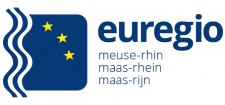The objective of this B-solutions report was to analyse the legislative and policy aspects of pupils attending a primary school in a neighboring country or region in the Euregio Meuse-Rhine.
The Euregio Meuse-Rhine (EMR) is a cross-border region that covers parts of Belgium, Germany, and the Netherlands. For parents living in this region, there can be several reasons to let a child attend a primary school at the other side of a national and/or linguistic border, for example because they want the child to learn a particular language very well (Dutch, French, German), because a school at the other side of a border has a good reputation and/or a special educational profile, or because a school at the other side of a border is simply the nearest one. Currently, cross-border mobility among primary school pupils has been observed among families who have moved across a national border due to (lower) housing prices but kept their center of life on the side where they moved from. Also, more affordable childcare and education may encourage such mobility. Furthermore, for the development of a common labor market and educational space in the EMR, the cross-border mobility of primary school pupils may be encouraged.
Despite this, the EGTC Euregio-Meuse Rhine (case applicant) reports that pupils living in the EMR may not be entirely free to choose a school in a neighboring country or even within one country. This is because children in all subregions of the EMR are obligated to receive education from a certain age. In many cases, an application for an exception must be requested in order to fulfill this obligation (leerplicht, Schulpflicht, l’obligation scolaire) when planning to attend a ‘foreign’ school. In addition, students may be required to meet specific admission criteria from the receiving region’s perspective in order to be allowed to attend such a school. These rules and regulations vary across different regions and countries according to the EGTC EMR, and they may impede the pupils’ possibilities to attend a school across a (regional or national) border in the EMR. In addition to these obstacles, pupils living close to a border might face other obstacles if they want to attend a school on the other side of a border, such as long waiting lists, unclear regulations, unbeneficial tax rules, financial contributions of parents, and differences in the organization of education and school systems across the EMR.








